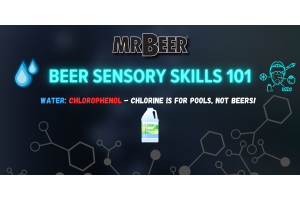Force Carbonating Your Homebrew

(Blog edited: April 2, 2018; prev. named "Different Ways to Carbonate your Homebrew")
Carbonation is more than just adding fizz to your beer; carbonation also carries volatile aroma compounds in your beer up to your nose, giving beers a discernable smell. Carbonation also activates the trigeminal nerve in your mouth, and different levels of carbonation feel differently when they hit this nerve.
There are two main ways you can go about carbonating your homebrew: force carbonation and priming sugar. This blog will explain force carbonating, be sure to read our priming sugar carbonation blog for the second carbonation method.

Forced Carbonation
(The commercial brewery approach) Why: Consistent, easy, fast. How: CO2 pressure forced into a tank until it dissolves in the beer. Best for: Easily reaching carbonation levels in brews that need to be served quickly. With what: You can force carbonate with a uKeg or Kegaroo, among other vessels.How to Force Carbonate
First you want to chill the keg of beer. Chilling it will allow the CO2 to dissolve into solution much easier. The colder the beer, the more CO2 it will hold. Then you'll want to purge the keg's headspace of any oxygen. The temperature of the beer will also determine how much pressure is used for carbonation. There are 2 main methods of force carbonating.- Set the psi to whatever pressure you're trying to reach (use the chart below as a reference) and leave it for a few days in your refrigerator/kegerator. The CO2 will slowly go into solution during that time. If you shake or roll the keg once in awhile, it will happen quicker. Just be sure to check for leaks so you don't lose a whole tank of CO2 in a day (using a soapy spray works well for this). Also, to prevent leaks, when bringing your beer from warmer temps to cooler ones, be sure to add a few pounds of pressure to the keg. This will assure that the keg's o-ring is seated properly so you don't lose CO2.
- The quicker method. Set the PSI all the way up to 25-35 psi, lay the keg on its side, and roll/shake the keg for about 5-8 minutes. It's not as accurate as the slower method, but it will carbonate your beer much faster. Be sure to let the beer settle for a few hours (overnight is best) so you're not pouring all foam.
|
Style |
Target CO2 Level (Volumes) |
| Ale, default | 2.5 |
| American Lager | 2.5–3.0 |
| American Pale Ales | 2.3–2.6 |
| Barelywine | 1.5–2.0 |
| British Browns and Bitters | 1.5–2.25 |
| Belgian Ales | 2.4–3.5 |
| Dark Lagers | 2.2–2.5 |
| Lager, default | 2.7 |
| Pale Lagers | 2.3–2.8 |
| Saison | 3.0–3.5 |
| Stout, Porter | 1.5–2.0 |
| Wheat Beers | 2.6–4.5 |






